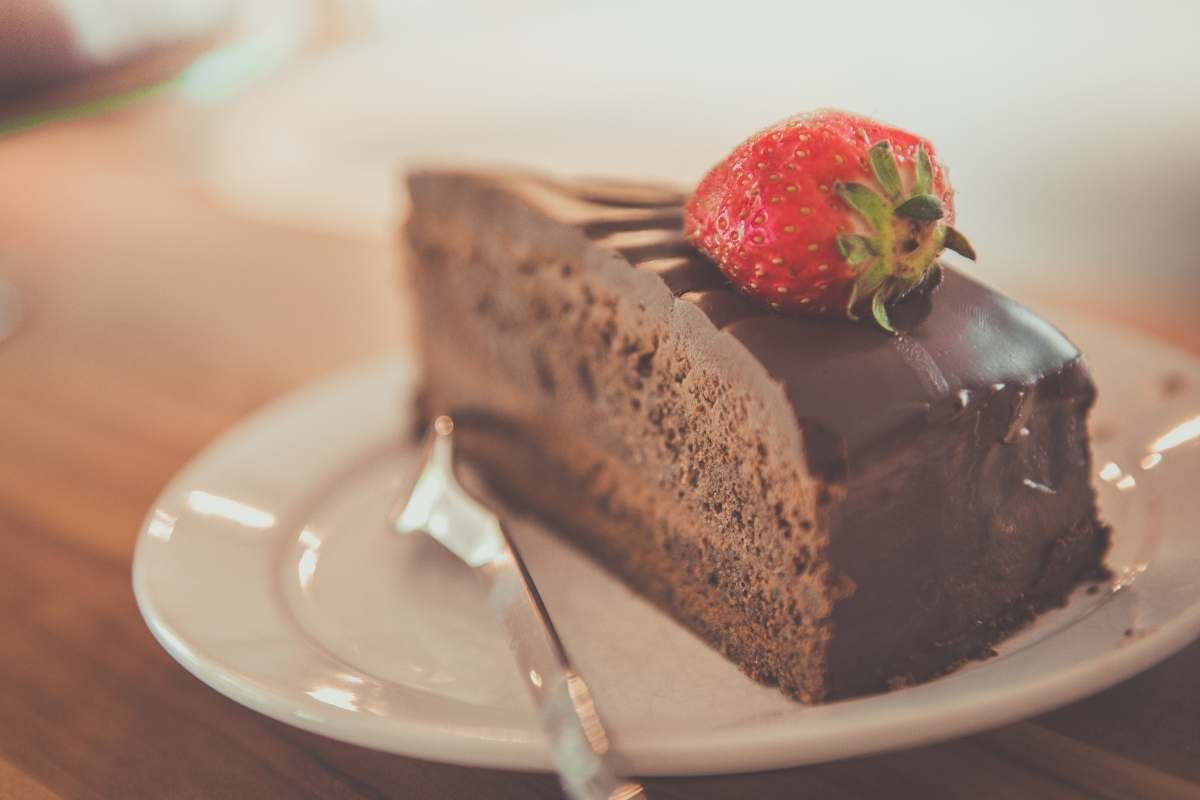Cake is a delicious snack or dessert and often after a small slice, you can find yourself eating more, exactly like I do.
One issue with cake is that it’s reasonably high in sugar and carbs, and it can be tempting to overeat after running. In this article, I will try to explain whether cake is good for running and how much you should or shouldn’t eat…read on!
As a general rule, cake is good for running according to medical professionals. Cake is high in carbohydrates and a high-carb diet provides better running performance. But, everyone has unique genetics, so each individual needs to monitor how cake affects their performance.
Some types of cake are very high in sugar, such as those that are completely coated in icing, and have layers of sweetened cream. It has been found that a high amount of sugar can decrease running performance. Below, I will explain the best kinds of cake for runners, and if when you consume cake is a factor – such as before or after a run.
Is It OK To Eat Cake Before Running?
Regular cake is typically a snack food, that can be enjoyed at any time of the day. Going for a run can also be done almost any time of the day. So, is it OK to eat cake before going for a run?
Overall, it is ok to eat cake before running. But, provided that the cake is not very high in sugar. Many cakes contain about similar amounts of sugar to a candy bar. It has been found in studies that consuming foods high in sugar causes decreased running performance.
A study (source) found that if sugary foods – like cakes that are high in sugar – are eaten an hour before going for a run that a runner’s performance is less. Therefore, if you are going to consume a sugary cake before going for a run, aim to do so for a few hours or more before going for a run. Especially, if you are going to do competitive or timed running, such as a race, or a marathon.
But, it’s important to get a handle on how sugary cake is so you know which cakes can be consumed closer to a run. And which ones should only be consumed a few hours before. Here’s a table that shows the amount of sugar found in a serving of cake, as a percentage of the recommended daily intake of sugar.
| Type of cake | Amount of sugar no icing | Amount of sugar with icing |
| Carrot cake | 18.8g | 31.3g |
| Banana cake | 19.7g | 42.6g |
| Chocolate cake | 25.0g (estimate) | 55.1g |
| Butter cake | 16.53g | 38.89g |
| Pound cake | 26.8g | 48.14g |
| Red velvet cake | 6g | 13.89g |
| Cheese cake | not applicable | 28.2g |
These numbers are for a typical serving or an average-sized slice. To get a better idea of how these numbers relate to your diet. Here’s a table that shows how much sugar each type of cake contains.
| Type of cake | Amount of sugar no icing | Amount of sugar with icing |
| Carrot cake | 18.80g | 31.30g |
| Banana cake | 19.70g | 42.60g |
| Chocolate cake | 25.00g (estimate) | 55.10g |
| Butter cake | 16.53g | 38.89g |
| Pound cake | 26.80g | 48.14g |
| Red velvet cake | 6.00g | 13.89g |
| Cheese cake | not applicable | 28.20g |
There is a recommended amount of sugar that is established by leading health institutions, such as Harvard Medical School, and the National Institute of Health (NIH). For women, this is 24g per day. And for men, this is 36g. To understand this better here are two tables one for men, and one for women. They show how much sugar is in each type of cake as a percentage of the recommended daily intake (RDI) of sugar.
Amount of sugar in cake as a percent of RDI for women
| Type of cake | Amount of sugar no icing | Amount of sugar with icing |
| Carrot cake | 78.33% | 130.42% |
| Banana cake | 82.08% | 177.50% |
| Chocolate cake | 104.17% | 229.58% |
| Butter cake | 68.88% | 162.04% |
| Pound cake | 111.67% | 200.58% |
| Red velvet cake | 25.00% | 57.88% |
| Cheese cake | not applicable | 117.50% |
Amount of sugar in cake as a percent of RDI for men
| Type of cake | Amount of sugar no icing | Amount of sugar with icing |
| Carrot cake | 52.22% | 86.94% |
| Banana cake | 54.72% | 118.33% |
| Chocolate cake | 69.44% | 153.06% |
| Butter cake | 45.92% | 108.03% |
| Pound cake | 74.44% | 133.72% |
| Red velvet cake | 16.67% | 38.58% |
| Cheese cake | not applicable | 78.33% |
From the table, you can see that one serving of most types of cakes except for red velvet cake contains about the recommended daily intake of sugar. With or without icing. However, most types of cake without icing contain about half of the recommended daily intake of sugar for men.
A benefit of cake is that it’s high in carbs. Medical professionals state that about 50% to 60% of a runner’s diet should come from carbs. The recommended daily intake of total calories per day for a woman is 1,600 to 2,400 calories, and for a man, it’s 2,000 to 3,000 calories.
The USDA states that around carbs contain 4 calories. So, doing some calculations, this means that women should consume 400g to 600g of carbs per day on the low end. And men should consume 500g to 750g of carbs per day. Below is a table that shows what percent of the recommended intake of carbs for runners a slice of each type of cake provides:
| Type of cake | Percent of the RDI of carbs for runners per slice of cake |
| Carrot cake | 5% for women, 4% for men |
| Banana cake | 8% for women, 7% for men |
| Chocolate cake | 12% for women, 10% for men |
| Butter cake | 4% for women, 3% for men |
| Pound cake | 4% for women, 3% for men |
| Red velvet cake | 13% for women, 10% for men |
| Cheese cake | 5% for women, 6% for men |
Can I Eat Cake After a Run?
Cake is a dessert/snack that often gets a bad wrap as causing weight gain, and being bad for you. Cake is high in carbs, and typically high in sugar unless sugar substitutes are used. But, here’s whether it’s OK to eat cake after a run.
As a general rule, it’s perfectly fine to eat cake after a run. Cake is high in carbs, and a high-carb diet is good for a person who runs regularly. The main concern with cake is that it’s high in sugar. 1 slice of many types of cake with icing accounts for the total recommended daily sugar intake.
For this reason, it’s best not to only consume one slice, and otherwise monitor the amount of sugar you consume. Eating more than one slice is OK every now and then. But, if you like to consume a lot of cake it’s best to consume those that are sweetened with stevia, monk fruit extract, or other natural sweeteners that have zero sugar.
Some cakes are better than others based on their sugar content, below is the best type of cake for runners.
What Is the Best Cake for Runners?
Overall, red velvet cake is the best cake for runners. The main concern with eating cake for running is the amount of sugar. Red velvet cake with icing, also called frosting has less sugar than all other types of cakes, even those that are made without icing.
The next best cake is cheesecake – though it could be argued it’s not technically a cake – followed by carrot cake with icing. A high-carb diet is recommended for runners. Red velvet cake also has the highest amount of carbs compared to other types of cakes.
What Is the Best Snack After a Run?
In general, you should consume a mix of carbs and protein after a run. Examples of foods that are high in protein are beans, lentils, meat, fish, and protein shakes. Foods that are high in carbs are bread, rice, sweet potatoes, potatoes, grains, and pasta.
If you go for a run before breakfast a good breakfast would be a bowl of muesli or oats (high in carbs), and a protein shake to get a good amount of protein. Or, instead of a protein shake have bacon and eggs, which are high in protein.
Whereas, if you go for a run before lunch or dinner you could go with the classic square meal of a serving of meat with rice, and a salad. Or, instead of rice have sweet potatoes or potatoes.
In this process, medical professionals state that you should monitor how your body feels and adjust your diet accordingly. Also, if you don’t eat meat, or fish then replace meat with other non-meat options such as tofu or kefir.
It has been recommended by medical professionals that a person who runs a moderate amount should consume about 2.5 grams to 3.0 grams of protein per pound of bodyweight. In practice, this is two servings of meat per day (source).
Such as lunch, and dinner. Whereas, an endurance runner requires a bit more and they should consume 2.5 to 4.5 grams of protein per pound of body weight.
Which may require large individuals, say a male that is 200 pounds to supplement their diet with a protein shake or two. As meals with a standard serving of meat will only give you about 2.0g of protein per pound of body weight.
Final thoughts
Cake is good for running but not all cakes are created equal. Most cakes are very high in sugar. Therefore, care needs to be taken to not go over the recommended daily intake of sugar. Red velvet cake is the best cake for runners because it’s the lowest in sugar, and one of the highest in carbs.
A high-carb diet is recommended for runners. Ideally, you should aim to consume cake after a run. Eating sugary food before going for a run has been found to decrease performance. After a run, the best foods to eat at those which are high in carbs and high in protein.


